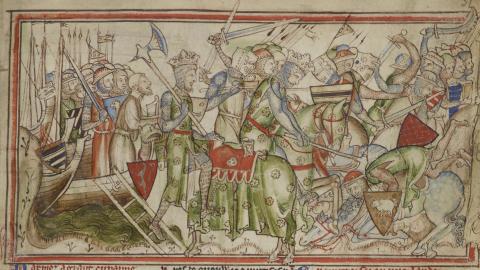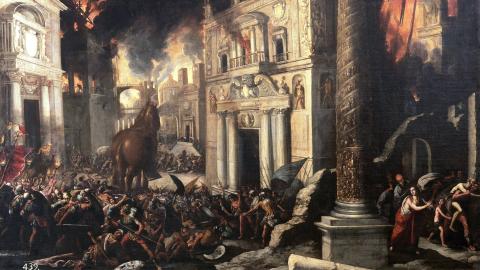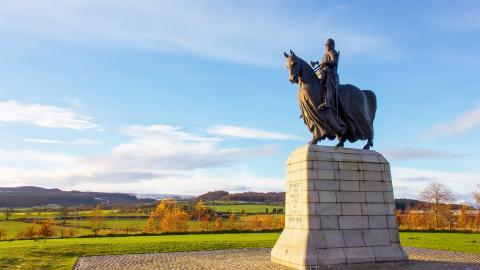The Battle of Yorktown
War: The American Revolutionary War
Dates: 28th September – 19th October 1781
Place: Yorktown, Virginia
Belligerents: United States of America & France vs. Great Britain
Known as ‘the battle that changed the world’, the siege that effectively ended the American Revolution and gave the United States its independence from British colonial rule could have been very different had it not been for bad decisions, bread ovens and barricades…
Very soon after the Declaration of Independence was signed on August 2nd 1776, General William Howe led a force of around 35,000 British and German soldiers to take New York. Starting in Brooklyn, they seized Manhattan, the Bronx, Staten Island, Long Island and the surrounding areas and for seven years it was held by the British until General (later President) George Washington decided he wanted it back.
But, the best-laid plans…
There were murmurings that French Admiral François Joseph Paul, Comte de Grasse would be taking a fleet of 24 warships towards New York but Washington subsequently learned the fleet was on its way down the eastern seaboard to Virginia instead.
In his diary, Washington wrote that he ‘was obliged to give up all idea of attacking New York’ and instead led his Continental Army, alongside French General the Comte de Rochambeau’s Expédition Particulière from Newport, Rhode Island on an arduous 680-mile yomp known as the ‘celebrated march’ to the small seaside tobacco hub of Yorktown, Virginia.
Bad decisions
Their primary target was the highly decorated, aristocratic General Charles Cornwallis, a veteran British soldier who spent years fighting the Americans in the south but had upped sticks north after being ordered to fortify a naval base on the Virginia coast.
Not the best decision the strategists ever made…
Since Yorktown sits at the tip of a peninsula, the French and Americans decided that if they hit it with a double-whammy, i.e. a land assault and a naval blockade, the British would be effectively isolated and by overrunning them, it could potentially bring the war to an end.
In the first week of September 1781, French naval forces engaged with – and were victorious against – a 19-ship British fleet damaging six of them and killing 90 seamen which prevented them from landing at Yorktown and giving Cornwallis the backup he badly needed. Amongst other factors, this was decisive in laying the groundwork for an American win.
Bread ovens
More bad decisions were made when General Sir Henry Clinton took control of the British forces. In the summer of 1781, he had braced himself for an assault on New York which never manifested itself but if the Americans and French were to succeed they needed to employ distraction tactics, and they did, in the most primitive but excellent way!
What they did was set up traditional French-style brick bread ovens in northern New Jersey to fool British spies into thinking an encampment was being set up for an assault on New York. They also spread misinformation about the invasion and the Brits bought it hook, line and sinker.
Again the strategists, including Clinton, didn’t figure out the ruse until it was too late. The Franco-American troops were on their way to Yorktown and to compound matters, Cornwallis’s requests for backup were ignored until October 19th, the day of surrender.
Building barricades & bad weather
Cornwallis’s plan to defend Yorktown was almost entirely dependent on the construction of physical barricades which included redoubts (hill-like fortifications) and underwater barriers. With the imminent fear of a French naval assault, he deliberately sunk about a dozen ships to – hopefully – block an invasion force and quite remarkably, slaughtered something like 400 horses and dumped them into the York River. This wasn’t a great plan in that the tide brought most ashore and ended up tainting the air with the foulest of stenches.
The British were desperate, low on supplies and boxed in.
The Americans and French closed in and took two of the most prominent redoubts. The end was near and the final nail in the metaphorical coffin was that it started to rain.
On October 16th, a last-ditch attempt on the main Franco-American line failed and under the cover of darkness, the British troops tried to sneak away across the York River but a violent storm blew in and cut off the water route. Tired, hungry and now without any more options for either fight or flight, Cornwallis surrendered.
The end
The very next morning, the Americans and French were greeted by a British drummer boy and an officer carrying a white flag and while the surrender negotiations lasted for a few more days, it was over.
One final embarrassment was that as the defeated general, Cornwallis was expected to be present at the formal surrender ceremony but he claimed illness and sent General Charles O’Hara in his stead.
‘I have the honour to inform congress that a reduction of the British army under the command of Lord Cornwallis is most happily effected.’
Even though the American Revolutionary War technically lasted until September 1783 with the signing of the Treaty of Paris, Yorktown was its last major battle. Both the British parliament and crucially, public opinion, turned against the war effort when the news filtered through to home shores and when Prime Minister Frederick North was informed of the shambles at Yorktown, he said ‘Oh God! It’s all over!’















